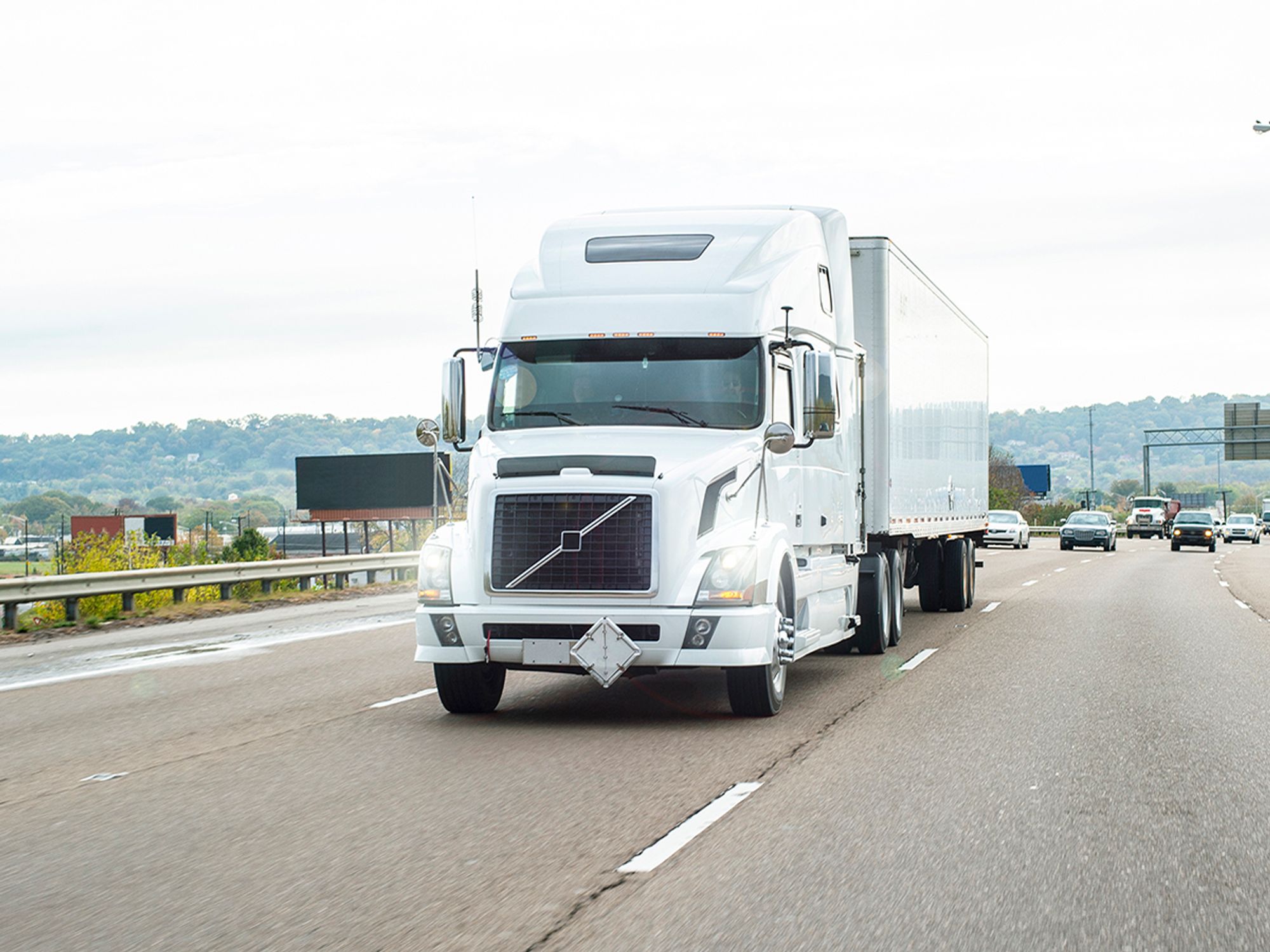Definition of larger CMVs

- CMVs over a certain size (or placarded) are subject to additional DOT regulations.
- The added rules apply to both interstate and in-state operations.
A subset of the Federal Motor Carrier Safety Regulations (FMCSRs) applies only to larger commercial motor vehicles (CMVs), those that meet the CMV definition found in 382.107 and 383.5. Drivers of these larger vehicles must:
- Hold a commercial driver’s license (CDL),
- Undergo U.S. Department of Transportation (DOT)-mandated drug and alcohol testing, and
- Complete entry-level driver training.
The definition refers to a vehicle used in commerce, either interstate or intrastate, that meets one of the following criteria:
- Has a gross combination weight rating (GCWR) or gross combination weight (GCW) (whichever is greater) of 26,001 pounds or more, including a towed unit(s) with a gross vehicle weight rating (GVWR) or gross vehicle weight (GVW) (whichever is greater) of more than 10,000 pounds;
- Has a GVWR or GVW (whichever is greater) of 26,001 pounds or more;
- Is designed to transport 16 or more passengers, including the driver; or
- Is used to transport certain hazardous materials.
As used in this definition:
Commerce:
- Any trade, traffic, or transportation within the jurisdiction of the United States between a place in a state and a place outside of that state, including a place outside of the United States; or
- Trade, traffic, and transportation in the United States that affects any trade, traffic, and transportation described above.
Gross vehicle weight rating (GVWR): The value specified by the manufacturer as the loaded weight of a single motor vehicle.
Gross combination weight rating (GCWR): The greater of: (1) the value specified by the manufacturer of the power unit, as shown on the certification label, or (2) the sum of the GVWRs or the GVWs of the power unit and the towed unit(s), or any combination of those that produces the highest value. Note that the GCWR of the power unit will not be used to define a CMV when the power unit is not towing another vehicle.
Hazardous material: Any material that has been designated as hazardous under 49 U.S.C. 5103 and is required to be placarded under Subpart F of Part 172 or any quantity of a material listed as a select agent or toxin in 42 CFR 73.
Which rules apply to these CMVs?
The regulations in Parts 380, 382, and 383 apply to drivers of vehicles meeting this definition of CMV, with some exceptions. That is, whenever the phrase “commercial motor vehicle” appears in those parts, it is referring to the larger-CMV definition.
These regulations govern CDLs, drug/alcohol testing, and entry-level driver training.
In effect, the operator of a larger CMV must comply with all of the FMCSRs found in Parts 350-399.
Longer combination vehicle (LCV) definition
Special training requirements apply to drivers of longer combination vehicles (LCVs), defined in 380.105 as: “any combination of a truck-tractor and two or more trailers or semi-trailers, which operate on the National System of Interstate and Defense Highways with a gross vehicle weight (GVW) greater than 36,288 kilograms (80,000 pounds).”
The LCV training requirements are found in Part 380 Subparts F – G.
